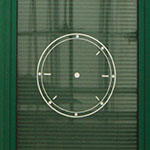Euroacademia Conferences
 Europe Inside-Out: Europe and Europeanness Exposed to Plural Observers (9th Edition) April 24 - 25, 2020
Europe Inside-Out: Europe and Europeanness Exposed to Plural Observers (9th Edition) April 24 - 25, 2020 Identities and Identifications: Politicized Uses of Collective Identities (9th Edition) June 12 - 13, 2020
Identities and Identifications: Politicized Uses of Collective Identities (9th Edition) June 12 - 13, 2020 8th Forum of Critical Studies: Asking Big Questions Again January 24 - 25, 2020
8th Forum of Critical Studies: Asking Big Questions Again January 24 - 25, 2020 Re-Inventing Eastern Europe (7th Edition) December 13 - 14, 2019
Re-Inventing Eastern Europe (7th Edition) December 13 - 14, 2019 The European Union and the Politicization of Europe (8th Edition) October 25 - 26, 2019
The European Union and the Politicization of Europe (8th Edition) October 25 - 26, 2019 Identities and Identifications: Politicized Uses of Collective Identities (8th Edition) June 28 - 29, 2019
Identities and Identifications: Politicized Uses of Collective Identities (8th Edition) June 28 - 29, 2019 The European Union and the Politicization of Europe (7th Edition) January 25 - 26, 2019
The European Union and the Politicization of Europe (7th Edition) January 25 - 26, 2019 7th Forum of Critical Studies: Asking Big Questions Again November 23 - 24, 2018
7th Forum of Critical Studies: Asking Big Questions Again November 23 - 24, 2018 Europe Inside-Out: Europe and Europeanness Exposed to Plural Observers (8th Edition) September 28 - 30, 2018
Europe Inside-Out: Europe and Europeanness Exposed to Plural Observers (8th Edition) September 28 - 30, 2018 Identities and Identifications: Politicized Uses of Collective Identities (7th Edition) June 14 - 15, 2018
Identities and Identifications: Politicized Uses of Collective Identities (7th Edition) June 14 - 15, 2018
Anatole Kopp: The Communist Utopia of a French Modernist
-
-

-
Presentation speakers
- Olga Yakushenko, European University Institute, Florence, Italy
Abstract:
I would like to offer the analysis of the oeuvre of Anatole Kopp (1915-1990), a French historian of architecture. He was the first to introduce the Soviet avant-garde architecture to the history of International Modern movement and one of the first Western authors to write about Soviet architecture of the 1920s. After a carful study of Kopp’s archives, I claim that the initial impulse of Soviet studies in architectural history was political, not aesthetic. Communist and architect himself, Kopp visited the Soviet Union for the first time with a group of French architects in 1955. During this travel, he discovered the Soviet architecture of the 1920s, almost unknown in the West at that time. I suggest that both the Khrushchev’s Thaw and the large crisis of architecture in France affected Kopp’s perception of the Soviet avant-garde architecture. In his first and the most known book on Soviet architecture, Town and Revolution (1967), Kopp drew open parallels between the present and the past of Modernist architecture considering the Soviet experience of the 1920s as modernist par excellence and a model for renewal of the post-war European architecture. Unfortunately, already in the early 1970s, Kopp became disillusioned with both the Soviet and European contemporary architectural practice. He became a devoted anti-postmodernist mourning the “corrupted” and “spoiled” modernism in his books and articles. Even though this political and ideological view on the Soviet avant-garde architecture was shared by Kopp’s Italian colleagues in the late 1960s, it was substituted by an aesthetic approach and analysis of architectural forms soon afterwards. Already in the 1980s the British art historian Catherine Cook considered the Soviet avant-garde as an aesthetic movement, leaving its radical ideology aside.I believe that the case of Kopp shows how closely architecture is intertwined with politics in certain epochs and, moreover, that so-called “objective” art history does not exist, it is always interpretative. In his reading of the Soviet avant-garde Kopp was driven by political impulse, whereas his successors were more interested in formal analysis. This case is also a telling example of transfer of knowledge. When Kopp wrote his book on the Soviet avant-garde in France in the 1960s, he made an act of translation. He used the Soviet avant-garde as an example and a possible model for French architects who were building mass social housing in order to struggle with the housing crisis. At this point, Kopp’s history of architecture was absolutely up-to-date in its interpretations and intentions.
-


















